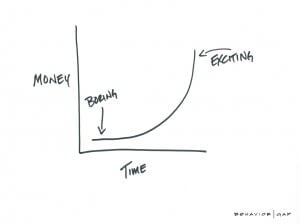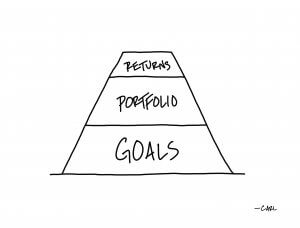
Thoughts on Getting Back in if You Sold Out
Investment ManagementBy: Jude McDonough, CFP® AIF®
Jun 19, 2020
I saw an interesting article yesterday on cnbc.com with some ideas on getting back in if you sold out during the downturn back in March. The article offered some great insight that I’ll touch on in this post while adding a few additional thoughts from our recent experience. Over the last couple of months, we’ve taken on some clients who were in that situation. I would love to tell you that we nailed every small pullback on the way up and they are now fully invested with great comfort. Unfortunately, if you have read any of my posts, you would hear loud and clear that I don’t encourage market timing.
First and foremost, you need to make a plan. Jumping back in to the same exact holdings you had may not be a prudent strategy. The problem there is that the market is a lot higher now than it was when you sold out. If it happens to sell off again, what if you panic again? Maybe your portfolio had more risk than you are willing to tolerate. You never truly know your risk tolerance until it is tested.
Did you ever talk to someone who told you they “lost everything” in 2008? Over the last 12 years, I’ve met people who referenced friends or family members who did. I believe that the people who “lost everything” during that crisis did one of two things. The first one would be that they were over exposed to companies that went out of business. In my opinion, that is the less likely scenario. The more probable one is that they sold out at a bottom, bought back in at a top and then sold out at a bottom again. If you do that enough times, you’ll eventually run out of money. 2008 offered plenty of opportunities to make that mistake as there were some head fakes before the market ultimately bottomed in March of 2009 and began its unprecedented run into March of 2020.
I digressed, but the paragraph above is an important lesson in determining your risk tolerance. Before you even invest a dollar, you should use the time to step back and assess your current situation. When do you want to retire? If you’re retired, how much money are you withdrawing per year from your portfolio? What are your goals for your money? Do you want to leave a significant amount behind to your heirs?
Those are just some questions to open the dialogue and help you determine what you need from your money. Once you get through that, you have to establish an asset allocation that puts you in a position to achieve those goals and make sure you are comfortable with it. Most importantly, you need to be honest with yourself in thinking about whether you would panic and sell again in the event of a downturn. No matter where you are in life, if you plan on being here for another 10 years or so, this probably wasn’t the last crisis you’ll live through. Finally, you have to follow through and invest the capital. I mentioned putting it all back in above. Another option mentioned in the article that we think is a good strategy is dollar cost averaging. Regardless of how you do it, you have to commit to the asset allocation you select and do your best to keep your emotions out of it. All you can do is learn from your mistake at this point. If you stay committed your investment policy and focus on what you can control, everything should work out in the long run.


